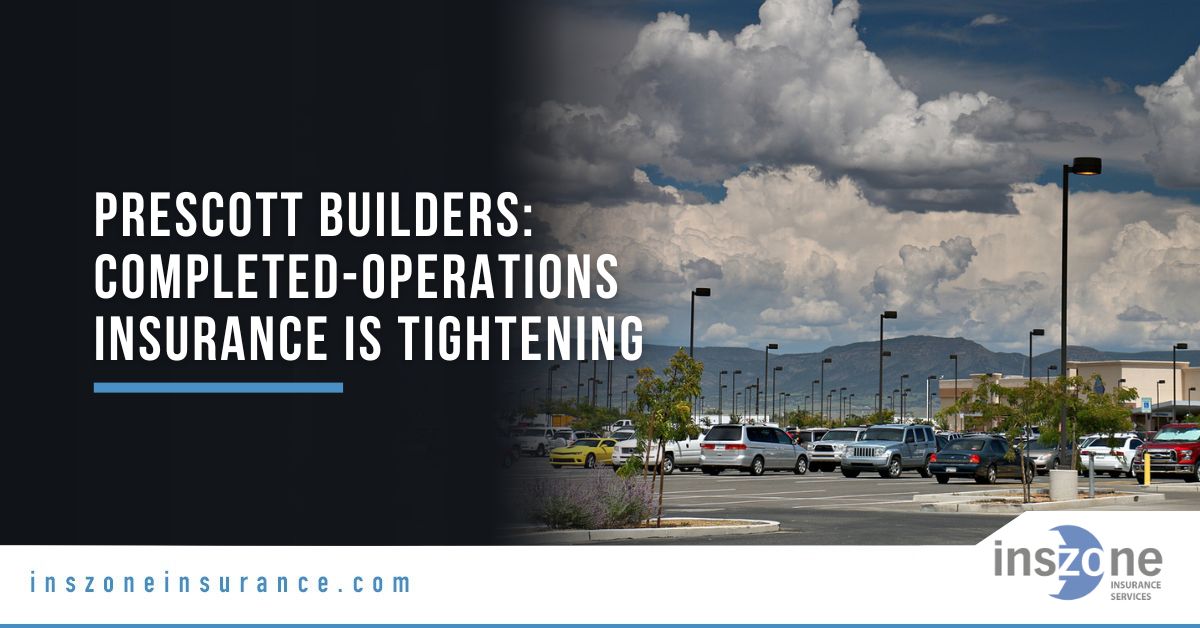What’s changing in 2025–26?
- Pricing pressure shifts from property to casualty. Nationally, overall commercial rates softened in Q2 2025, but casualty (including general liability and completed-ops) continued to tick up—globally around low-single digits—while U.S. composite was flat on average. Local contractor classes with losses or tougher exposures can still see higher increases than the headline averages.
- Carriers are tightening endorsements. Expect stricter use of EIFS/synthetic stucco exclusions, fungi/bacteria (mold) exclusions, subcontractor-work limitations, pollution exclusions, and even explicit wildfire exclusions on some programs writing work in or near the WUI.
- Higher limits in contracts. Many HOA and large-project agreements now specify $1M per occurrence / $2M aggregate at a minimum, often with per-project aggregate wording and explicit products-completed operations aggregates.
Why are Arizona builders under the microscope?
Statute of repose & notice-to-repair rules. Arizona’s statute of repose gives most construction-defect claimants up to 8 years from substantial completion (with a limited 9th-year extension in specific circumstances). The Purchaser Dwelling Act requires notice and a right to repair before suit—timelines matter when owners ask for long CO tail obligations. Lawmakers considered changes in 2024–25 that would shorten periods for some claims; keep an eye on contract durations versus statutory realities.
Wildland-Urban Interface (WUI) exposure. Prescott maintains defined WUI zones and vegetation-management requirements. Embers and wind-driven fire spread—not just direct flames—drive losses and building-performance concerns that underwriters factor into pricing and exclusions.
Recent wildfire history. The Crooks Fire (2022) burned south of Prescott; the Goodwin Fire (2017) burned more than 28,000 acres in the area—useful context when owners ask for higher limits and stronger CO language on rebuilds and remodels.
Expansive and collapsing soils. The Arizona Geological Survey notes “problem soils” statewide. In Yavapai County and around Prescott, expansive clays and moisture changes can push foundation and settlement claims years after completion—classic CO exposure.
Not sure if your policy still meets 2025 contract specs? Inszone’s Prescott construction team can review your completed-operations wording and find cost-effective solutions before bid season.
Who feels it most in Prescott?
- Custom-home GCs in or near the WUI. Owners may request higher aggregates and tighter specs where ember exposure and smoke infiltration risks exist (think soffits, vents, decks, and building envelope details tied to wildfire performance).
- Roofers, framers, and exterior trades. Many programs add stricter completed-ops terms and sub-limits for decking, fire-rated assemblies, and water-intrusion exposures.
- Residential and multi-unit work. Be wary of housing-project/tract limitations or full residential exclusions that knock out coverage beyond a certain unit count.
Where are the hidden gaps?
| Red-Flag Endorsement / Requirement | What It Does | What to Ask For / Do |
|---|---|---|
| CG 22 41 (Housing Projects) / “Tract housing” limitations | Excludes or limits GL on residential projects, sometimes past a unit threshold. | Clarify unit counts; seek carve-outs or project-specific buy-backs if you bid multi-lot work. |
| CG 21 86 (EIFS/synthetic stucco) | Broadly excludes liability arising from EIFS work or components. | Confirm whether any exterior system triggers this; get alternative cladding specs approved. |
| CG 21 67 (Fungi/Bacteria) | Removes coverage for mold-related BI/PD and cleanup. | Tighten WRB details, ventilation, and documentation to reduce water-intrusion disputes; explore buy-backs where available. |
| CG 22 94/22 95 (Your-work by subs) | Eliminates the usual “subcontractor exception,” shrinking CO coverage for GC work done by subs. | Avoid where possible; or restructure scopes and sub insurance to mitigate. |
| Pollution exclusions & Wildfire exclusion | Removes coverage for pollutants; some allow only “hostile fire” exceptions. Some GL forms now exclude wildfire outright. | Check for hostile-fire exceptions; verify if any wildfire exclusion applies in WUI work. |
| Additional insured endorsements | CG 20 10 covers ongoing ops; CO protection for the AI typically requires CG 20 37. | If contracts demand CO AI status, include CG 20 37 (and track certificates). |
| Per-project aggregate wording | Applies the general aggregate separately per project; prevents one claim from draining the whole policy. | Ask for ISO CG 25 03 (or equivalent) and consider a designated CO aggregate for larger jobs. |
Sources and Further Reading
- A.R.S. §12-552 (Statute of Repose)
- A.R.S. §12-1363 (Purchaser Dwelling Act—notice & right to repair)
- SB 1641 (2024 proposal to shorten defect deadlines)—status & summary
- City of Prescott—Urban Wildland Interface Zones (map)
- IBHS (2025): Ember-resistant buffer reduces wildfire ignition risk
- Crooks Fire (2022) background—Wildfire Today
- Goodwin Fire (2017) overview
- Arizona Geological Survey—Problem Soils
- CIAB Q2 2025 Commercial P/C Market Survey (PDF)
- Marsh Global Insurance Market Index—Q2 2025
- Insurance Journal—Q2 2025 rate trends (by line)
- IRMI—Designated Construction Project General Aggregate (CG 25 03)





